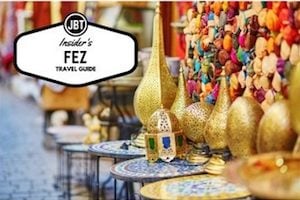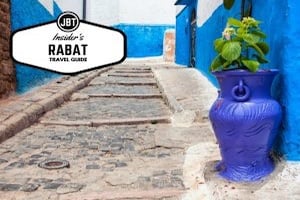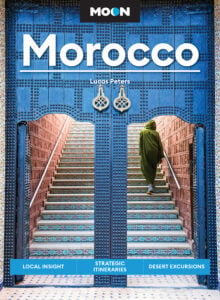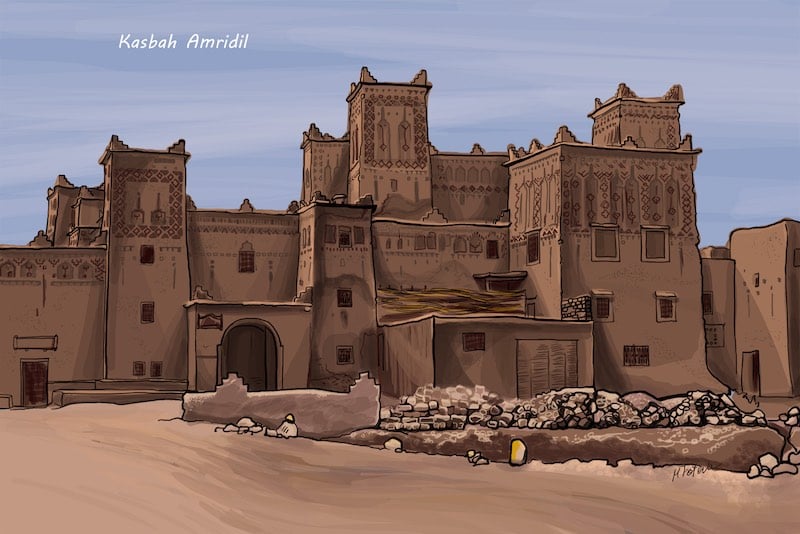
Take the road from Erfoud to Ouarzazate and you will find yourself driving along what is commonly known as the Road of One Thousand Kasbahs. You’ll catch a spectacular view of a vast valley dotted with small oases and hundreds of ancient fortifications. The sand-colored walls of the kasbahs may all start to look the same after a while, but don’t be fooled: they each hold a special historical treasure within.
About 45 kilometers before Ouarzazate (200km after Erfoud), make a stop in Skoura. Here, in this quiet little village speckled with palm tree groves, you will find one kasbah that stands out from the rest. The Kasbah Amridil, originally built in the 17th century, is one of Morocco’s most iconic living museums. It has withstood the test of time, making it the ideal setting for an insight into the ancient traditions of kasbah life.
A Living Museum
Kasbah Amridil has changed little since its foundation over 300 years ago. The family who built the kasbah, the Nassiri family, iare still the proprietors and are responsible for its upkeep and renovations. The houses that line the intricate streets have been restored for visitation purposes and a traditional hotel has been set up just outside the kasbah walls for those who want to stay a little longer. The family also added space for a museum with ancient Moroccan artifacts. Here, you will be able to take a look at some tools that were used in the area generations ago, and some that are still used today in southern Morocco.
While effort is made to accommodate visitors, life in the kasbah is still very much the same. The Nassiri family lives onsite and carries out their daily life among the ancient wells, the olive-oil press, the bread ovens, and the happy goats meandering in the courtyard. After you’ve taken in the traditional ways of the kasbah, make your way up the stairs to the top of the fortification to get a stunning view of the surrounding Skoura palm groves.
Fun Facts
- The kasbahs’ magnificence has also caught the eye of many filmmakers. Blockbuster hits such as Lawrence of Arabia indeed used the sand-colored walls of the citadel as the backdrop to their action scenes.
- If you don’t get a chance to visit the kasbah or want to keep admiring it in the future, simply keep an old 50 dirham bill around: the tapering towers of the kasbah are featured on its back side (note: the new 50 dirham notes no longer have the image).
Want to Visit other kasbahs in Morocco?
There are several other kasbahs that are open to the public and provide a glimpse into Moroccan life that was.

Kasbah des Udayas is a 12th century kasbah in Rabat, the capital of Morocco. It’s impressive history tells the story of Morocco in a way few other locations can. Home to countless sultans, tribes, and Andalusian immigrants the additions and modifications of each successive group can still be seen throughout the fortification.
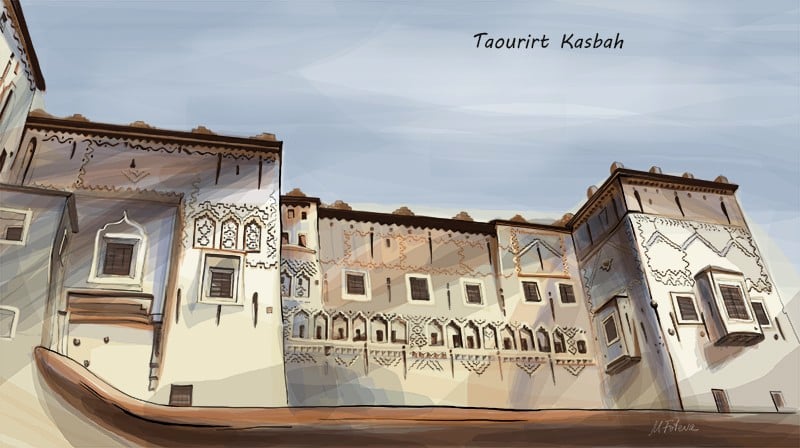
Taourirt Kasbah is not far from Kasbah Amridil. There are almost 300 rooms in the kasbah and it’s easy to get lost inside. The infamous and powerful el Glaoui family owned this kasbah and his extended family lived their day to day lives here. The kasbah is being restored and not all areas are accessible but many are.

Telouet Kasbah is between Marrakech and the UNESCO world heritage site Ait Ben Haddou. The stunning examples of Islamic architecture are a must see. This was the home of Thami el Glaoui, the powerful warlord who once reigned in this region and was the Pacha of Marrakech. Only recently has the structure gone through repairs to restore the work that is said to have taken 300 craftsmen, three years to complete.
Getting Here & Beyond
If it is unique experiences and destinations you seek, we can help. We make sure guests experience the authentic, off the beaten path sites that make Morocco unique. Contact us today to start planning your visit to Kasbah Amridil and other great destinations!

